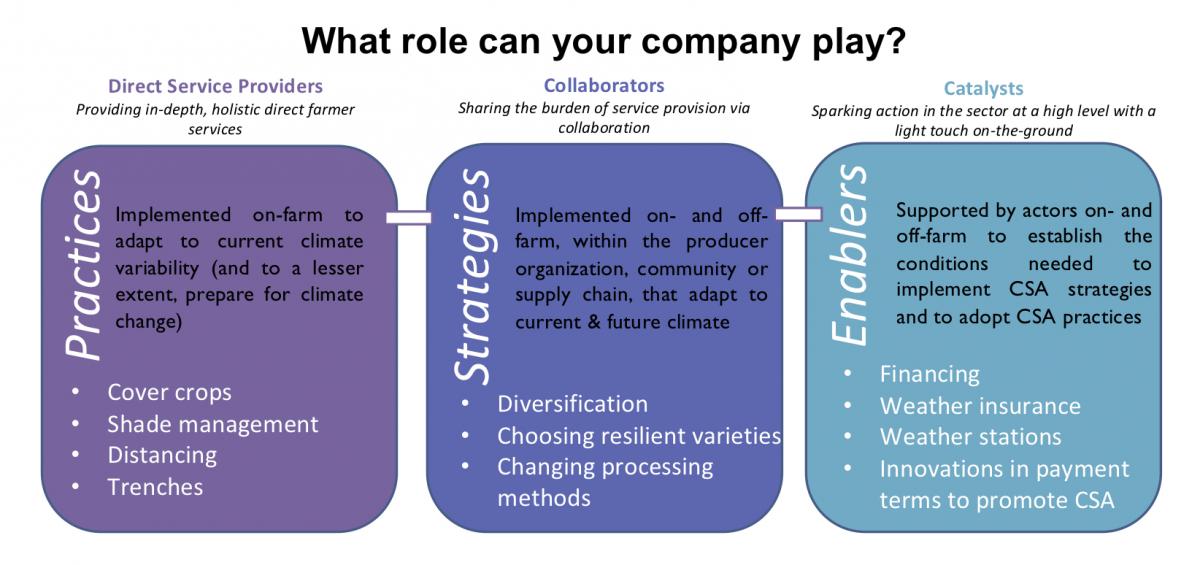
Different actors have different opportunities to engage or invest in climate-smart agriculture based on their role in the supply chain, including through on-farm practices to help farmers adapt to climate variability, on-farm and off-farm strategies that help supply chain actors adapt to current and future climate threats, and enablers that help to establish the conditions needed to implement CSA.
The ways in which the private sector supports farmers to build resilience to climate change and/or engage in efforts to mitigate climate change can have significant impact on the ability for farmers to make a living, the security of supply of smallholder crops, and the reputation of private sector actors drawing loyalty of end consumers and investors. CSA helps address a number of important challenges such as the relationship between agriculture and food security, poverty, and climate change.
Coffee is particularly vulnerable to climate change because like many crops, it is highly dependent on consistent temperature ranges and water availability, which are typically what climate change threatens to undermine. The practices, strategies and enablers that coffee companies have at their disposal depends largely on their role in value chain as well as the projected climate impacts of their sourcing areas. For example, those providing direct services to farmers have more leverage and motivation to encourage practices at the farm level, collaborators who share responsibility for service provision are better able to implement broader strategies on and off-farm, and catalysts sparking action in the sector at a high level with a light touch on-the-ground are best positioned to build and support the conditions to help supply chains adapt to climate change.
Interventions at the scale of landscapes or sectors are just as important as farming practices to ensure climate resilience. These interventions at a larger scale include plant breeding, re-planting tree crops, managing peatlands, avoiding deforestation, and stewarding ground and surface water. Landscape level interventions require effective multi-stakeholder organization and collaboration to diagnose the challenges facing the landscape and then to design and implement solutions.





